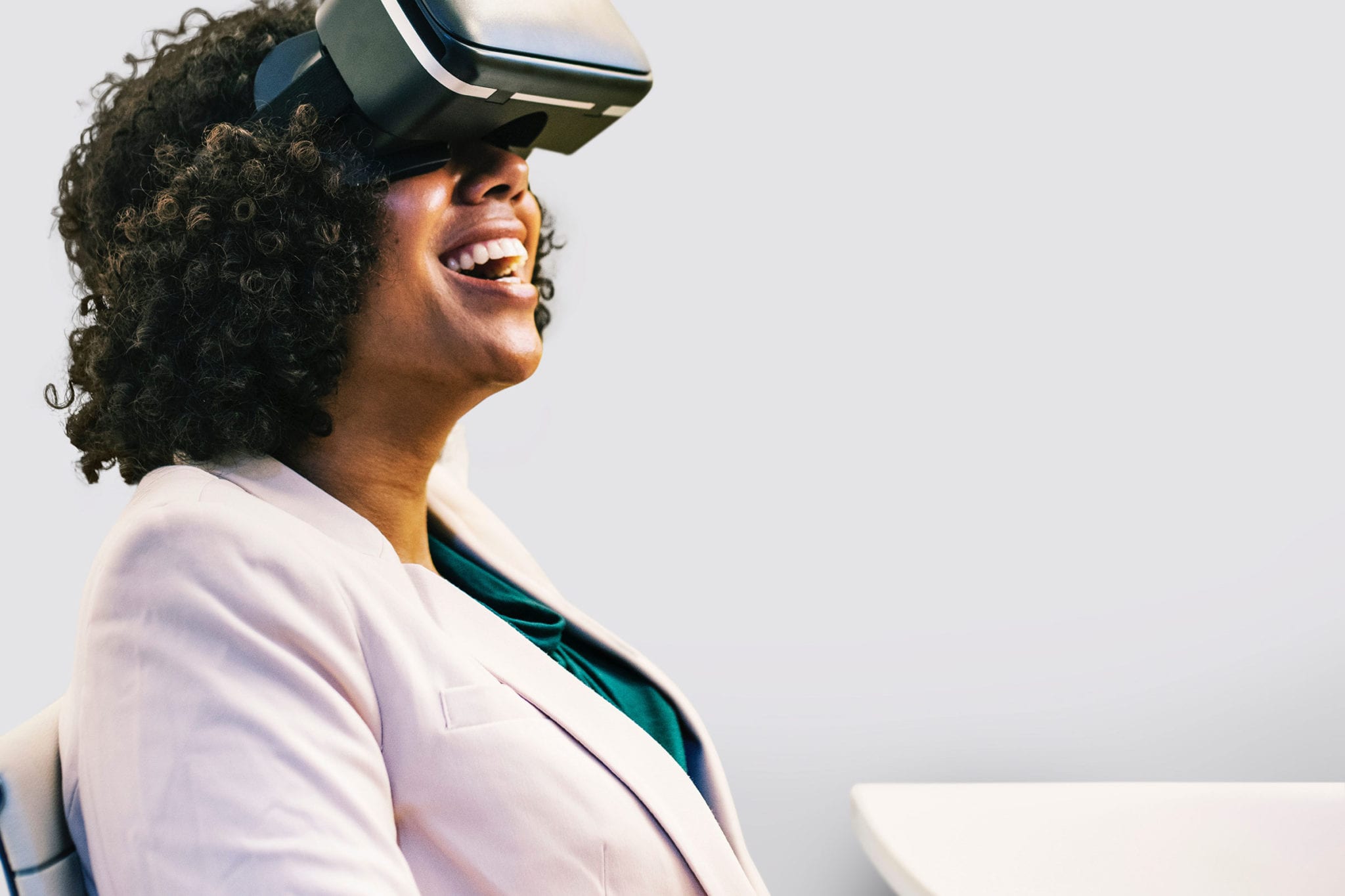Whatever industry you’re in, virtual reality (VR) is coming your way. Sure, the impact on the video game industry hasn’t been as big as initial estimates predicted. But more and more companies, from Fortune 500’s like WalMart and Ford to small businesses, are finding impressive ways to use VR.
There are a host of benefits of using virtual reality in business scenarios, from improved retention in training, to the ability to check remote locations from thousands of miles away, among others. Below are four applications of virtual reality that I believe are going to be indispensable for business.
Virtual Showrooms and Point-of-Purchase Display Design
A host of retailers are experimenting with virtual showrooms for the customer, but the internal implications for space planning and design will be, in my opinion, the winning edge. From being able to redesign an entire room to a point-of-purchase display for hundreds of stores, once VR really gets integrated into the business design process, there will be no looking back. In an article on Forbes, Retail Contributor Barbara Thau describes how Kellogg’s was able to improve its display of Pringle’s potato chips with feedback from customers who experienced different display options in VR. This approach reduced what would have been a 26-week testing process down to two weeks.
Through VR, designers in multiple locations can collaborate, adjust things as necessary, and work within the given amount of space to perfect the design or display, which can then be shared with others to view in virtual reality before the design is finalized.
Remote Site Management
A major cost to businesses is having to send personnel out to a remote location. Aside from the cost, there’s also the dangers associated with jumping in a vehicle to travel hours to check on equipment. With a slew of new connected sensors and devices not available, an oil and gas company, for example, could first be alerted to a situation at a remote location via text or push notification, and then a technician could explore the exact sensor location in VR – this includes within pipes, underground, or on the ocean floor. This application may be a few years off, as it would require sensors able to indicate a specific error, damage, or other issue. But in the near future businesses will look back and remember how crazy it was to be sending people out to check remote equipment.
Training
John Deere, WalMart and Cisco are just a few of the household names actively using VR for training. And as the software gets better and the hardware cheaper, we’re going to see VR training happening at companies of every size. It makes a lot of sense – immersive experiences result in higher retention (up to 80% better retention according to this article in Fortune). A common statistic is that 65% of humans are visual learners, and that’s the big strength of VR – bringing the user into a highly engaging and detailed visual environment. Additionally, equipment that’s not readily available (or difficult to access – per the remote site example above) can be easily recreated for training in VR. So when an employee needs to access the real thing, they could have already logged hours and hours of experience. Based on general utility, employee training will arguably have the greatest impact on business operations, making training more affordable and effective.
Sales
On the marketing side, we’ve all seen VR experiences at a tradeshow booth. These experiences can be impressive and effective. But the potential on the sales side – to start and / or move conversations forward, is going to have a big impact. Sales professionals will be able to offer VR experiences to profile buildings that won’t be finished for years to get sales moving early. This applies to real estate, but also to enterprises like data centers as well as convention centers with planned expansions, helping them lock in longer-term deals based on new capacity, spaces and amenities that will be available down the road.
Fundraising
Similar but different to the sales scenarios, VR creates a powerful connection like no other. Short VR films like Chasing Coral, which shows the impact of coral bleaching, can be extremely influential and motivate people to take action. Many non-profit organizations, from the International Rescue Committee to the Clinton Global Initiative, the United Nations, and Charity: Water have used VR to highlight the causes they support. Despite the costs of producing an impressive VR film or experience, in many cases the fundraising results have been strong. Taking it down a level from broad international campaigns, universities, churches, and other institutions can use VR or mixed reality experiences to help raise funds for new buildings and facilities, additions, and other needs.
Communication
Today more than ever teams are spread out over multiple locations. This can make interpersonal communication a challenge, despite the prevalence of tools like video conferencing and Slack. In a communications setting, VR can help strip away distractions and make people feel as if they were actually sitting together in the same room. According to Jeremy Bailenson, founding director of Stanford’s Virtual Human Interaction Lab, in an article on PRI.org, “What VR does is it takes all the gadgets away, it takes all of the multitasking away and you actually feel like you’re with someone.” Bailenson believes that VR can transform how we interact and operate in business settings, including reducing commutes (or eliminating then altogether in some cases), and also improving business communications overall. I share his optimism.
We knew it wouldn’t happen overnight. But today more and more businesses are using VR in a variety of beneficial ways. Today some of these applications may be nothing more than a nice feature, but soon they’ll be indispensable.
To quote Bailenson, “…I really believe that the software and the hardware are here. We’ve just now got to use it.”


